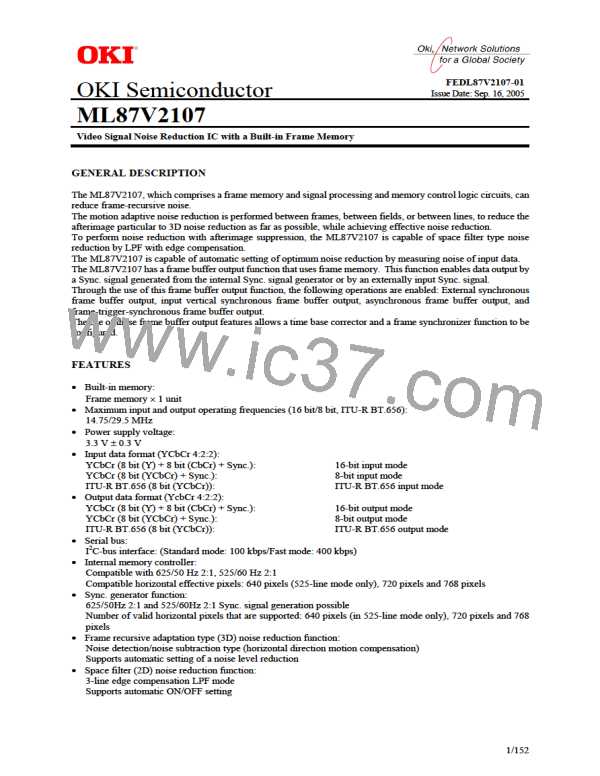FEDL87V2107-01
OKI Semiconductor
ML87V2107
•
Principles of Adaptive Noise Reduction
Adaptive noise reduction is achieved through the selection of noise data that utilizes the correlative
relationships between frames, fields, and lines for the pixels for which NR is to be performed, as shown in
Figure F2-3 (3).
The distinguishing characteristics of each correlation are as shown below.
Between frames
: Same position (most effective), time difference 2V (less effective)
→Effective for still images (good NR, substantial afterimage)
: Position 0.5H different (effective), time difference 1V(effective)
→More effective for moving images than frames, more effective for still images than
lines (medium NR, medium afterimage)
Between fields
Between lines
: Position 1H different (less effective), time difference 0 (most effective)
→Effective for moving images, but not effective for edges (medium NR, no
afterimage, no NR for edges)
This IC detects motions and edges between lines, frames, and fields, based on the features described above, to
select data after better correlated NR and achieve effective NR.
Time axis
2V
1V
1V
Direction of V
1H
: NR target pixel
: NR
Figure F2-1 (3) Noise Reduction Correlative Relationships
There is an edge between the lines.
Field NR
Frame NR
Line NR
x2
There is motion
between the frames
There is motion
between the fields
Figure F2-1 (4) Adaptive Noise Reduction Principles
42/152

 OKI [ OKI ELECTRONIC COMPONETS ]
OKI [ OKI ELECTRONIC COMPONETS ]